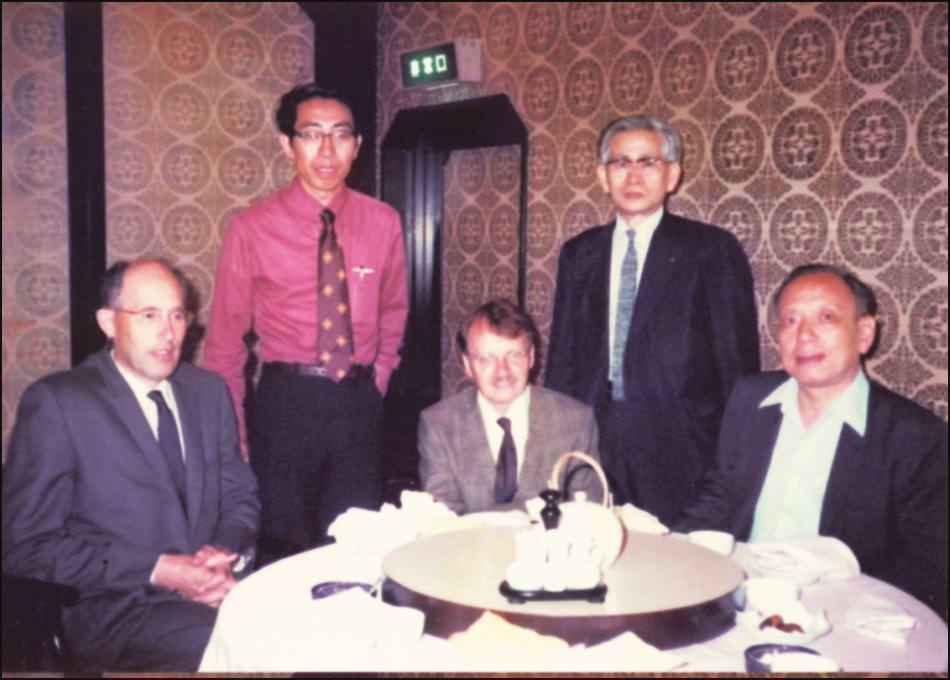by Hung-Hsi Wu
I first met Sho in 1962 at one of the AMS Summer Institutes in Santa Barbara. I had just finished my first year as a graduate student at MIT, and he told me he was on his way to Berkeley. We ended up being colleagues for forty-seven years when I myself got to Berkeley in 1965. Although as colleagues we could not help but run into each other often, I think it was in the ten or so years from 1980 to 1990 that I had extended contact with him every week when he drove me home after each differential geometry seminar late in the day on Friday. We had to walk a bit before we could get to his car and that gave us even more of a chance to chat and gossip. I am afraid the intellectual quality of the conversations was not particularly high, but the entertainment value was off the charts. It was most enjoyable. However, the one thing that has stuck in my mind about Sho all these years is probably the fortuitous confluence of events surrounding the discovery of the Kobayashi metric in 1966.

In the summer of 1966, Professor Chern and I attended the AMS Summer Institute on entire functions in La Jolla, and Professor Chern gave a lecture on his new result on the volume decreasing property for holomorphic mappings from (basically) the unit ball in \( \mathbb{C}^n \) into an Einstein manifold of the same dimension with negative curvature in a suitable sense. This is a generalization of the famous Ahlfors–Schwarz lemma on the unit disc, and it is to Professor Chern’s credit that he recognized it as the special case of a general theorem about holomorphic mappings on complex manifolds. At the time, the idea of putting the subject of holomorphic functions in a geometric setting was very much on his mind. In the following fall, he gave a similar talk in one of the first lectures of the Friday geometry seminar, but this time he had a manuscript ready. The main ingredient of his proof is basically a Weitzenböck formula for the volume form; his observation was that negative curvature (in one form or another) of the target manifold limits the behavior of holomorphic mappings. This is the beginning of what Phillip Griffiths later called hyperbolic complex analysis. Of course both Sho and I were in the audience, and within two or three weeks Sho came up with a generalization using more elementary methods.
At the time I was fascinated with Bloch’s theorem (in one complex variable) and was trying to understand why there would be a univalent disc for holomorphic functions into the unit disc. Professor Chern’s paper contains a reference to a paper of Grauert–Reckziegel which can also be said to be an application of the Ahlfors–Schwarz lemma. Upon reading it, I got the idea that Bloch’s theorem was a consequence of the phenomenon of normal families and, as a result, I could prove a qualitative generalization for Bloch’s theorem for holomorphic mappings between complex manifolds. I wrote up my findings and, as it was the tradition then among the geometers at Berkeley, put copies of my manuscript in my geometry colleagues’ mailboxes.
In a few days, Sho came up with the manuscript of his announcement that all complex manifolds carry an intrinsic metric, the metric that now bears his name. Sho recognized that with the availability of the Ahlfors–Schwarz lemma, the construction of the Carathéodory metric could be “dualized” to define the Kobayashi metric. His paper took the focus completely out of the holomorphic mappings themselves and put it rightfully on the Kobayashi metric of the target complex manifold in question. This insight sheds light on numerous classical results (such as the little and big Picard theorems) and inaugurates a new era in complex manifolds.